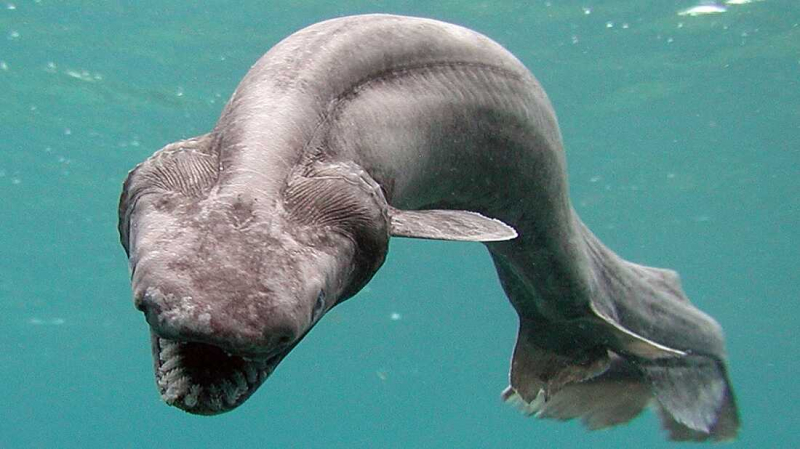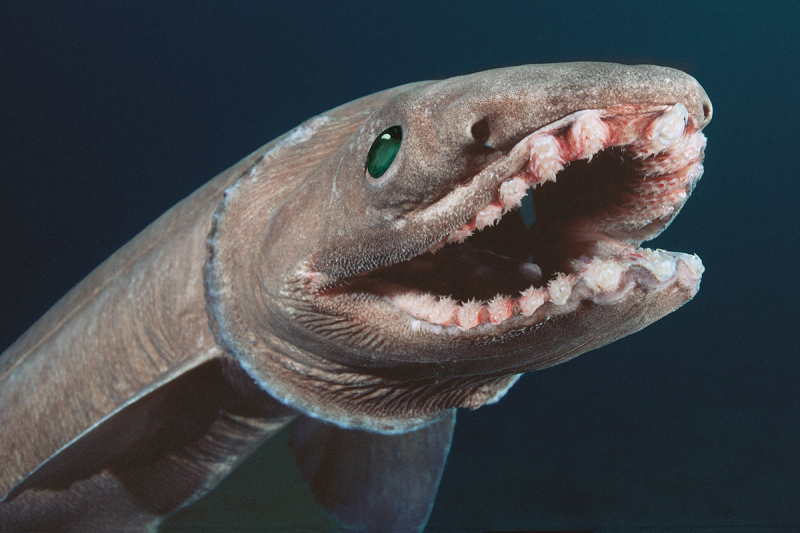Frilled shark

One of the weirdest deep sea fish is the frilled shark. The two remaining shark species in the Chlamydoselachidae family are the frilled shark and the southern African frilled shark. Because of its primitive, anguilliform morphological characteristics, including its dark-brown hue, amphistyly, and a 2.0 m-long body with dorsal, pelvic, and anal fins placed towards the tail, the frilled shark is regarded as a living fossil. The term "frilled shark" refers to the six pairs of gill slits at the shark's throat, which have a fringed look.
One of the oldest species on earth, the frilled shark, has undergone very little evolution since prehistory, earning it the moniker "living fossil". It distinguishes out for being a long, bulky animal that averages 2 meters in length, while some individuals can grow as long as 4 meters. It can eat big prey thanks to the strength of its 300 teeth and 25-row jaw. They can absorb the little oxygen that is present in the deep sea because of their six-gill holes. Their primary food sources are fish, squid, and sharks.
The waters of the outer continental shelf and the upper-to-middle continental slope are among the habitats of the frilled shark, which prefers upwellings and other biologically productive regions. Despite typically inhabiting areas near the ocean floor, the frilled shark's diet of cephalopods, smaller sharks, and bony fish suggests that it engages in continuous vertical migration and rises to the ocean's surface at night to feed.









